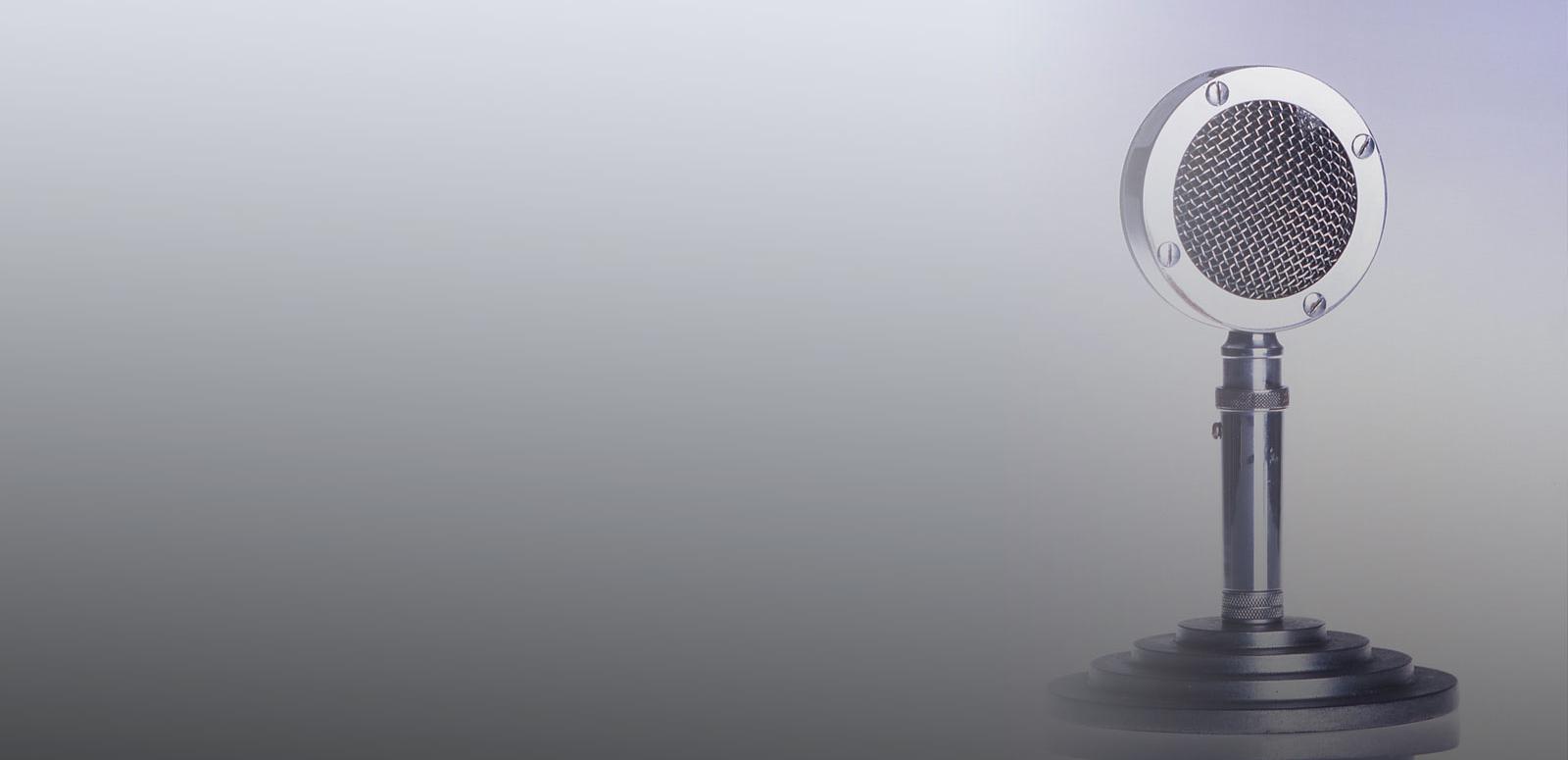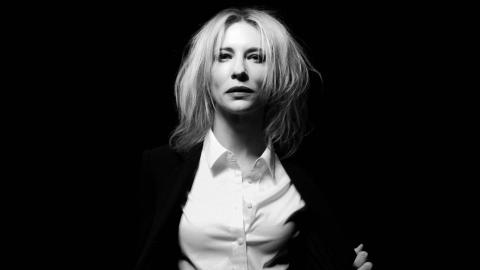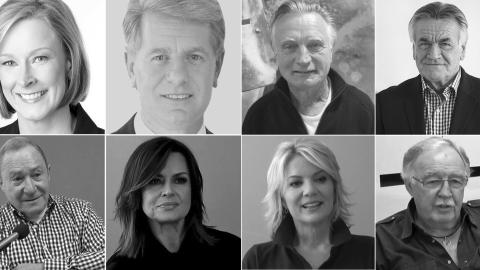

Waves from the Golden Age
Once Upon A Wireless is one of, if not the largest, single Oral History project that the NFSA has been involved in. It was conceived originally by former Sydney broadcaster Bruce Asmus, in the late 1980s. He had become increasingly alarmed by the apparent loss or destruction of large amounts of recorded radio material, which he discussed with then 2KA Manager Ray Bean, and subsequently with Jeff Rushton at FARB, and Bob Scott at 2DayFM. Their concern was that the memories and stories of those who had been involved in radio broadcasting since its earliest days were equally at risk. From these discussions, the project concept – initially called ‘An Archive’ of, or an ‘Audio History of Commercial Broadcasting in Australia’ – was born.
It was initially envisaged as a three year project which would yield around 500 interviews and more than 1000 hours of recording with radio pioneers, or those who had worked with them, at a cost of $1.5 million, to be sourced from a mix of government and corporate funding. Asmus described himself as Coordinator and Executive Producer, but kickstarting a project of this magnitude was easier said than done. It was only when consultant Brendan Horgan was brought in to manage the project and a Sydney-based steering committee – comprising radio personalities, technical and management staff past and present – put in place that things began to gather impetus.
A pilot program was recorded in Newcastle in August 1989, the project renamed ‘Once Upon A Wireless’ (OUAW) with a vintage RCA microphone as its logo, and a national media launch arranged and scheduled. Here’s organising committee chairman Leon Becker at the launch, co-hosted by the NFSA and the AFTRS in Sydney, in May 1991:
Extract from Once Upon a Wireless promotional tape, 1991. NFSA: 303825
Getting started
The launch was a great success, attracting lots of media coverage and goodwill, but no dollars. Ultimately, Horgan set up a public company with the ability to give a tax deduction and, over time, some high-profile sponsors, including BASF, QANTAS, FARB, Westpac, and Wesgo, provided welcome support. Under its new guise, Horgan became Project Director and Company Secretary, and Bruce Leonard, Chairman of the Board of Directors.
For its part, while expressing enthusiasm for the project from day one, the NFSA was meant to be an arms-length partner, in that it could not directly commit money or staff to the project. In the event, though, the NFSA did provide some cash contributions to the project at different times, had staff involved in various capacities in each of its offices, hosted committee meetings and handover ceremonies in Sydney and Melbourne, and accepted the completed interviews for lodgement in the national collection.
With this level of support, and related assistance from state libraries elsewhere, the OUAW Company was able to set up working committees of committed veterans from commercial radio who shared the project aims, initially in Sydney, then Melbourne, and progressively through the other states. Based on their contacts and knowledge of the industry, these volunteer groups took responsibility for selecting interview subjects, tracking them down, and conducting the actual interviews.
Their targets were those people still living who had worked extensively in all areas of Australian commercial radio from its inception through the so-called ‘golden years’ until the introduction of television in the mid-to-late 1950s. The first official handover of completed interview tapes to the NFSA was made in August 1993, and these handover ceremonies continued periodically until the project’s conclusion in late 1996.
Interview highlights
The interviews themselves, as might be expected, vary enormously in scope and quality. Each interview is of a different length, with no prescribed set of questions, and each interviewer had discretion to adapt their approach according to the subject. Collectively, the interviews cover a wide range of topics: here’s just a taste of some of the enjoyable and enlightening moments from the OUAW body of work.
The first clip features Dan Webb – or Danny as he was better known then – ex-3DB in Melbourne, reminding us all that radio truly was the ‘theatre of the mind’:
Listen to Dan Webb interviewed by Bob Horsfall. Extract from 1994 oral history interview. NFSA: 272414
The next extract features another Melbourne broadcaster, Keith Glover, on the subject of voice training for announcers, a neat example if we needed one of how verbally adroit these on air presenters were:
Listen to Keith Glover interviewed by Denzil Howson. Extract from 1995 oral history interview. NFSA: 307844
Now three anecdotes from the ‘what can go wrong’ department, in relation to radio drama – the first from the OUAW interview with actor Lloyd Lamble:
Listen to Lloyd Lamble interviewed by Phil Charley. Extract from 1994 oral history interview. NFSA: 250515
In a similar vein, this is actress Lynne Murphy, talking about George Edwards and the cast recording of an episode of the long-running Dad and Dave serial:
Listen to Lynne Murphy interviewed by Bob Horsfall. Extract from 1994 oral history interview. NFSA: 294040
In this next clip, Denzil Howson recounts from his time at 3YB Warrnambool the unfortunate outcome of an error by a panel operator in track selection from a radio serial transcription disc:
Listen to Denzil Howson talking to Les Kermond. Extract from 1994 oral history interview.
Finally, the very voluble Michael Pate, discussing the advent of technological change and its implications for the radio performer fraternity:
Listen to Michael Pate interviewed by Bruce Leonard. Extract from 1996 oral history interview. NFSA: 294437
Project outcomes
So what were the project outcomes overall? Once Upon A Wireless fell short of its ambitious original interview and sponsorship targets, but it did succeed in capturing on tape for posterity the essence of an era of commercial broadcasting in Australia. Given also its representation in each state and the nomadic nature of many of the radio practitioners interviewed, the project achieved genuine national reach. And the many interview references to the birth of television in this country brought home to Brendan Horgan the sobering truth that those involved in this new field at that crossover time were by now similarly age-challenged. This inspired him to embark upon a new interview-based project, with a companion publication entitled Radio With Pictures!: 50 Years of Australian Television (2006, Lothian Books).
For the NFSA, the OUAW Project provided a significant boost to its under-resourced Oral History Program and increased the representation of radio-related interview holdings in the collection. The project also gave relevant staff in each of the NFSA offices the opportunity to better intersect with this important group of stakeholders, especially at the various handover ceremonies which the NFSA hosted.
Preservation and legacy
In terms of the overall legacy of OUAW, at one level it provided a very workable model for producing a win/win outcome from an archive and media industry partnership. The OUAW Company largely fulfilled its aim of chronicling the history of commercial radio via the recorded words and anecdotes of those who steered it through its halcyon days prior to television. This outcome was achieved through the extensive personal networking of the small and skilled army of volunteers, the well organised effort of the OUAW Project Director and Board, and its corporate status which helped secure valuable sponsorship at critical times. With its limited resources, the NFSA could not have commissioned, recorded, and acquired a body of work of this magnitude on its own. The window of opportunity to interview many of these radio luminaries would have closed very quickly had not this project been initiated at that time.
At the same time, the NFSA did provide a permanent home for the completed interviews, as well as various levels of support and assistance for the project as indicated, throughout its seven year duration. And this duty of care continues. The original interviews were recorded on audio cassette, with some equipment and tapes made available by the NFSA. Interviews were subsequently transferred to Studio Master 911 reel-to-reel tape, supplied by BASF, predominantly by volunteers Monty Maizels in Melbourne and the indefatigable Ken Brentnall in Sydney, before handover to the NFSA.
In all, around 360 interviews under OUAW auspices were ultimately lodged with the NFSA. The NFSA has now digitised more than 200 OUAW interviews, increasing their accessibility for scholars, researchers, program makers, and for online use. This digital preservation work – which has been carried out by the NFSA’s Audio Services staff (particularly Ernie Oxwell, who sourced and copied the audio selections above) – will continue.
The original interviews were conducted by around 40 volunteer interviewers across six states. For the most part, these people were not professional or trained oral historians, and the quality of interview varies considerably. The best of them though, are equal to any of those recorded by career interviewers on commission for the regular Oral History Program. Like the best interview content, they highlight the value of the personal anecdote in adding life and colour to the historical record. They also help contextualise the actual productions of the time, many of which are held in the NFSA’s collection of radio programs. Given also that many of the OUAW interviews were recorded with on-air talent, the common element and extra dimension that these presenters or performers bring to their interviews is ‘the voice’ – their articulation and ongoing love affair with the microphone so redolent of the golden radio age.
Above all, the OUAW Project drew to national attention the urgency of the need to capture the story of this particular era in Australian broadcast history before it disappeared. Given that the young turks who led the music, talkback, and current affairs programming charge, after television threatened to kill the radio star, are now not so young, perhaps the time for a Mark 2 version of Once Upon A Wireless is nigh as well?
The National Film and Sound Archive of Australia acknowledges Australia’s Aboriginal and Torres Strait Islander peoples as the Traditional Custodians of the land on which we work and live and gives respect to their Elders both past and present.


